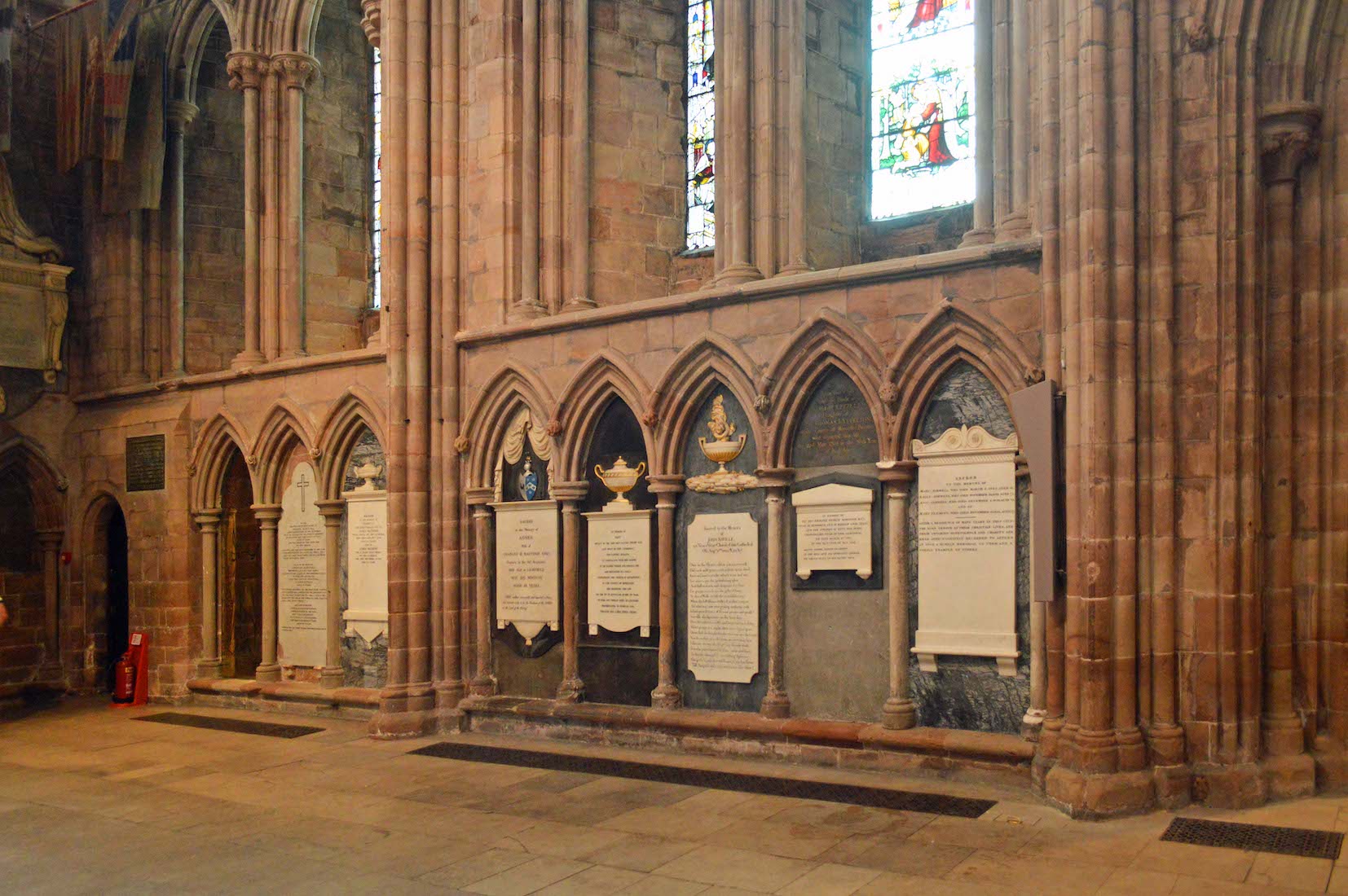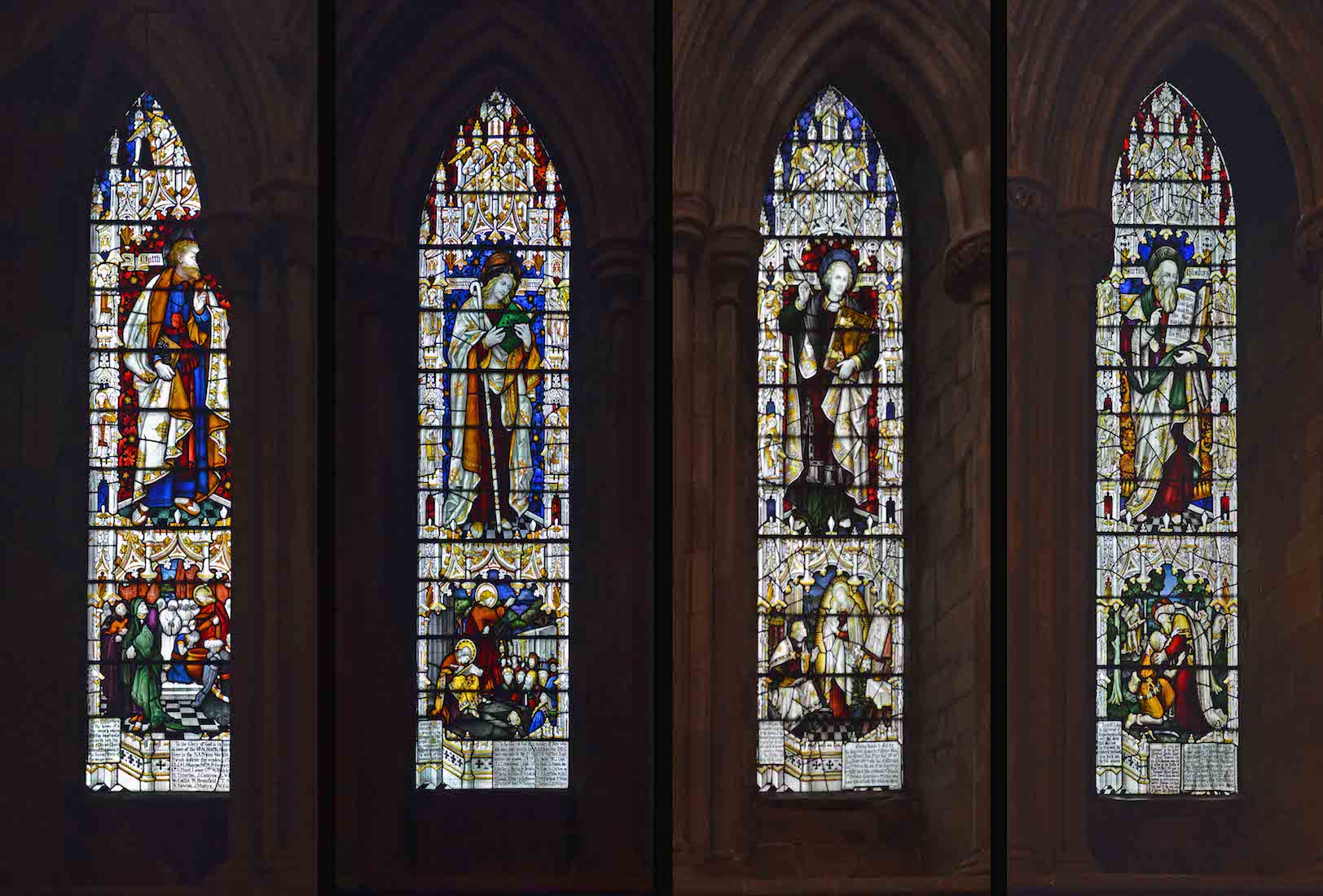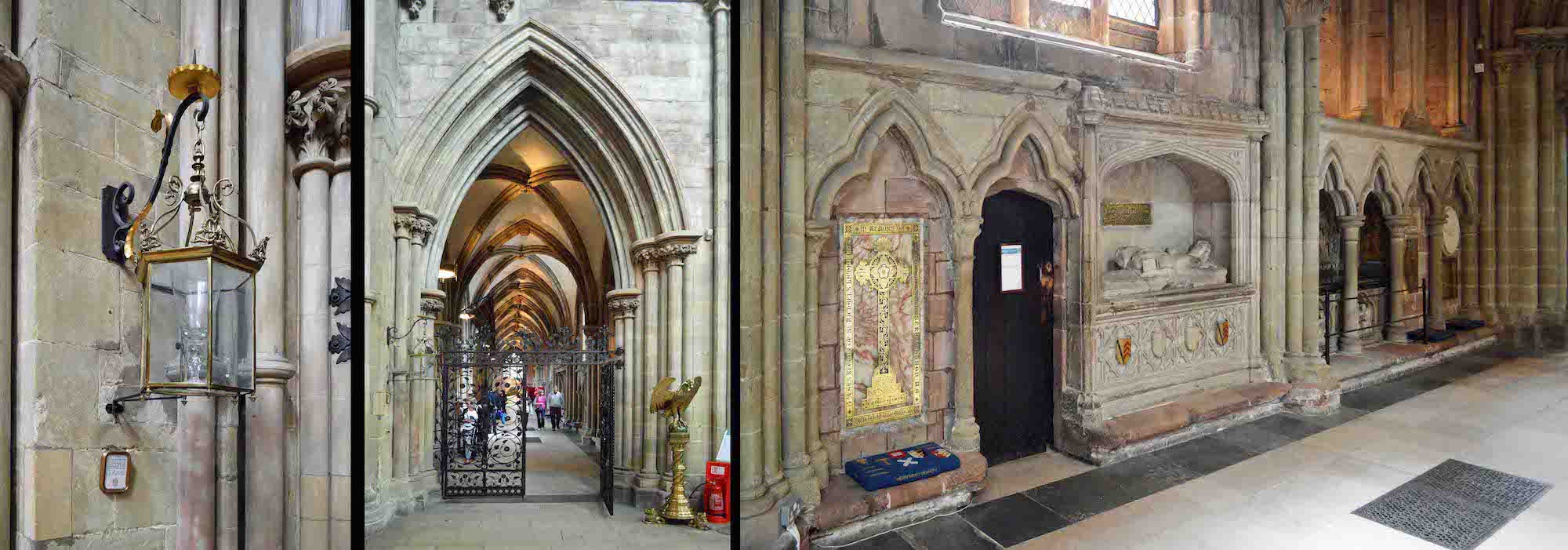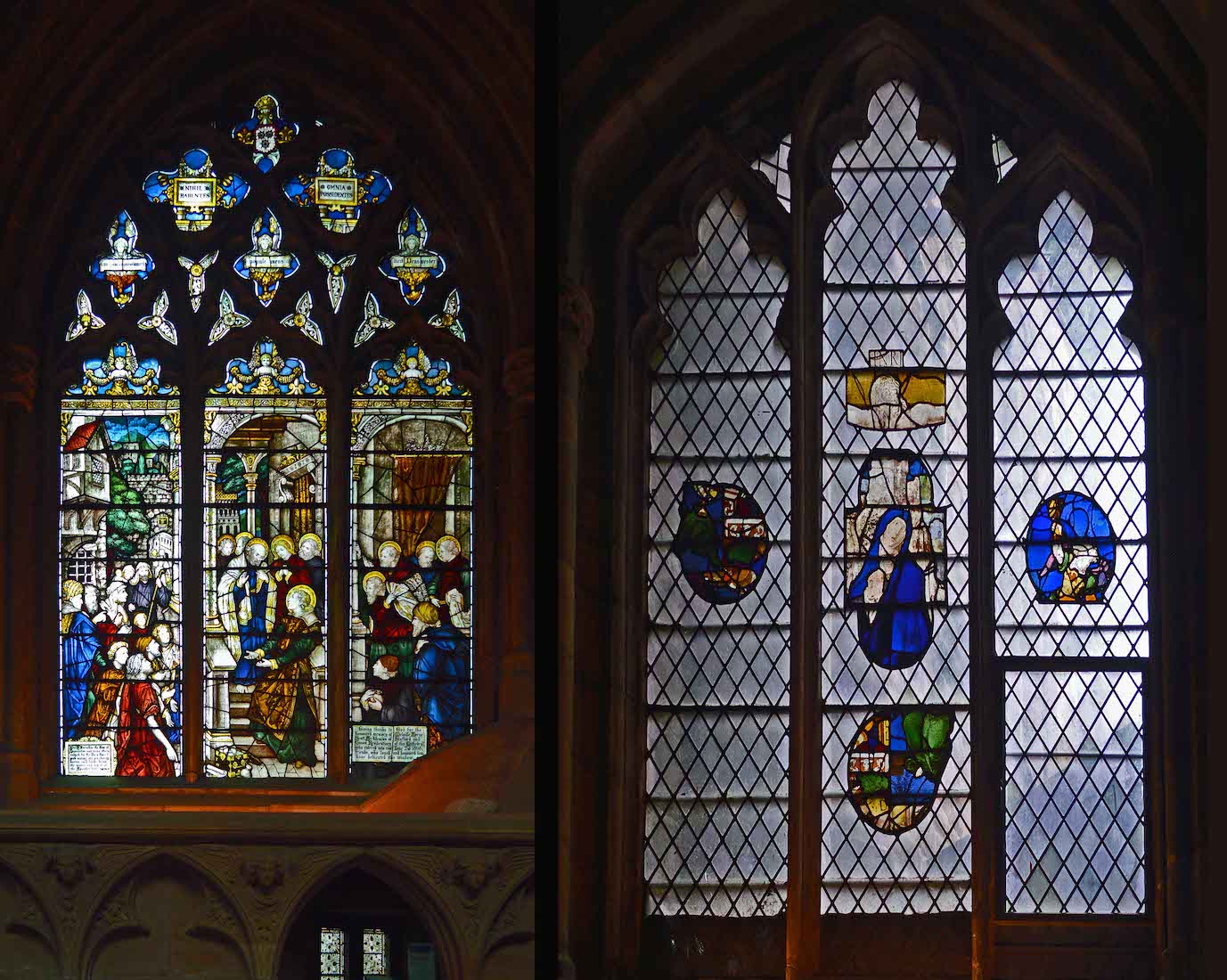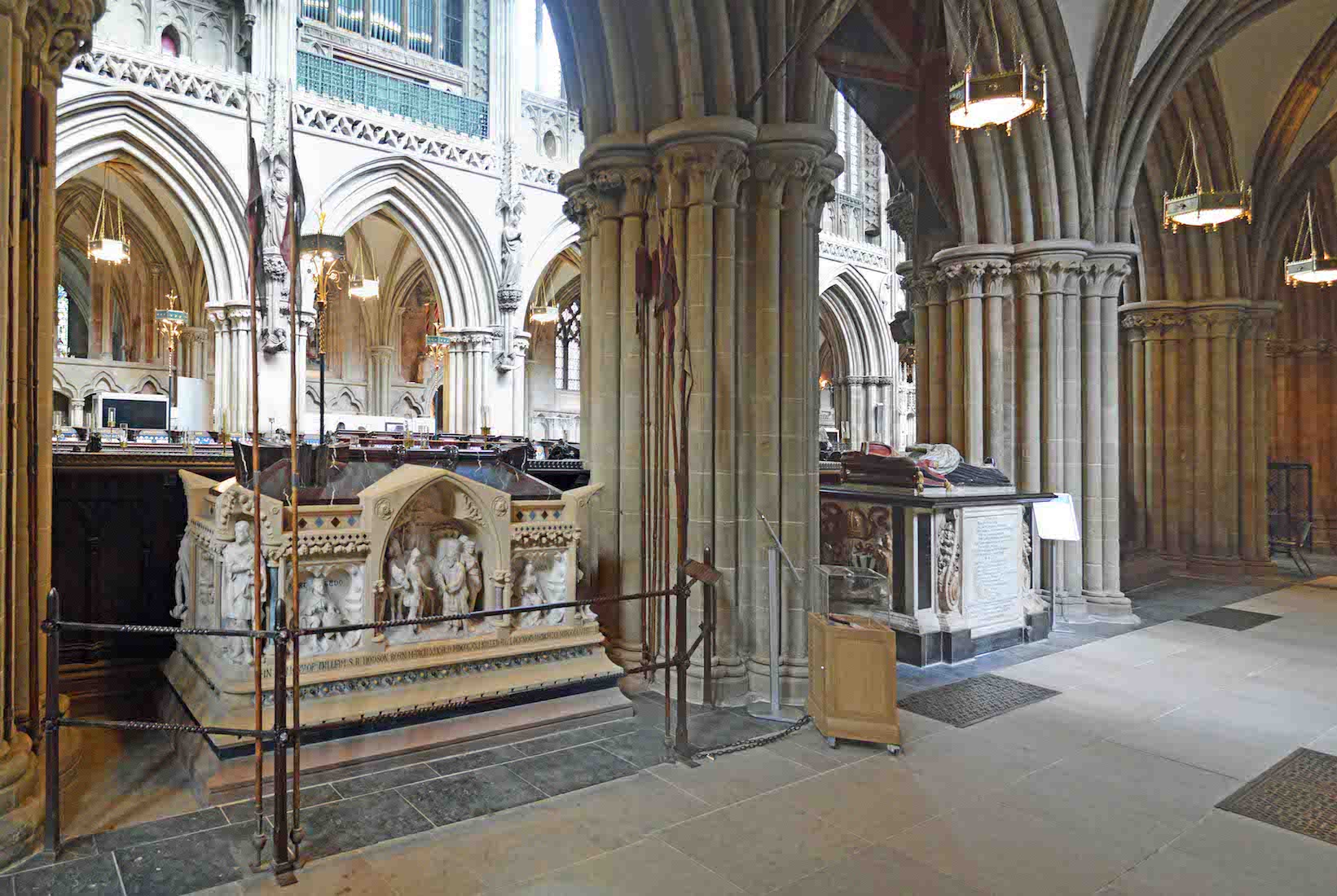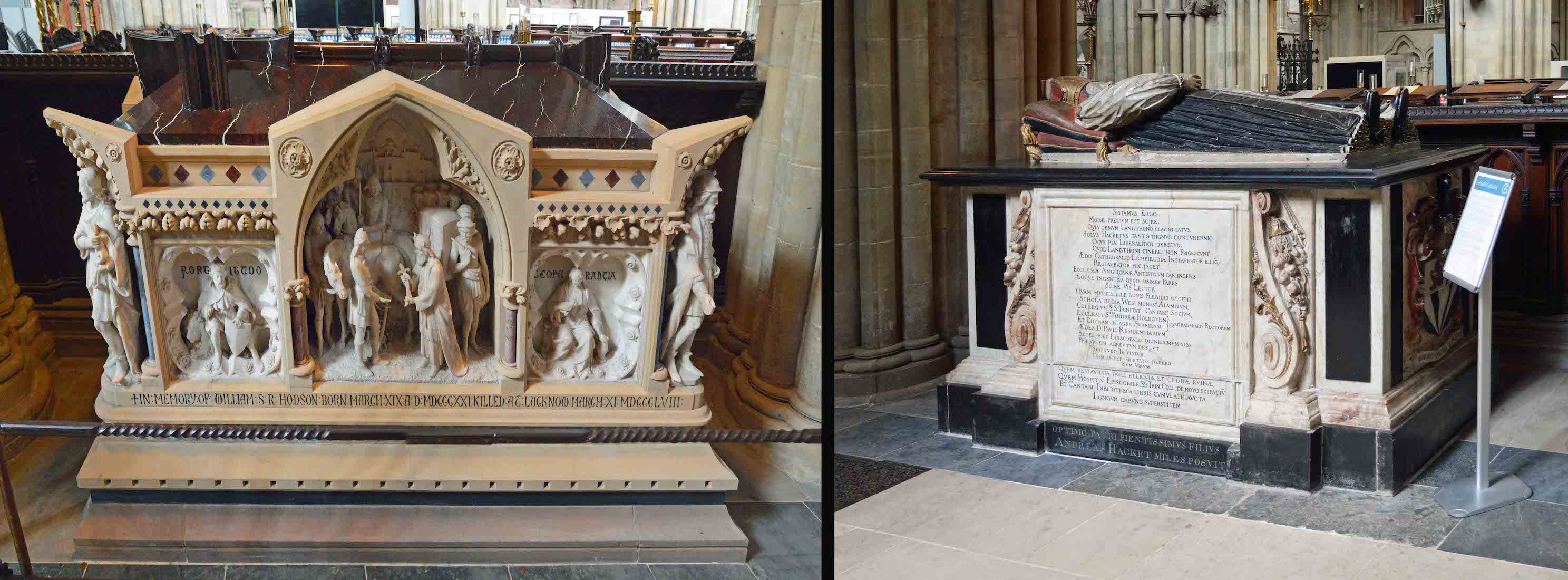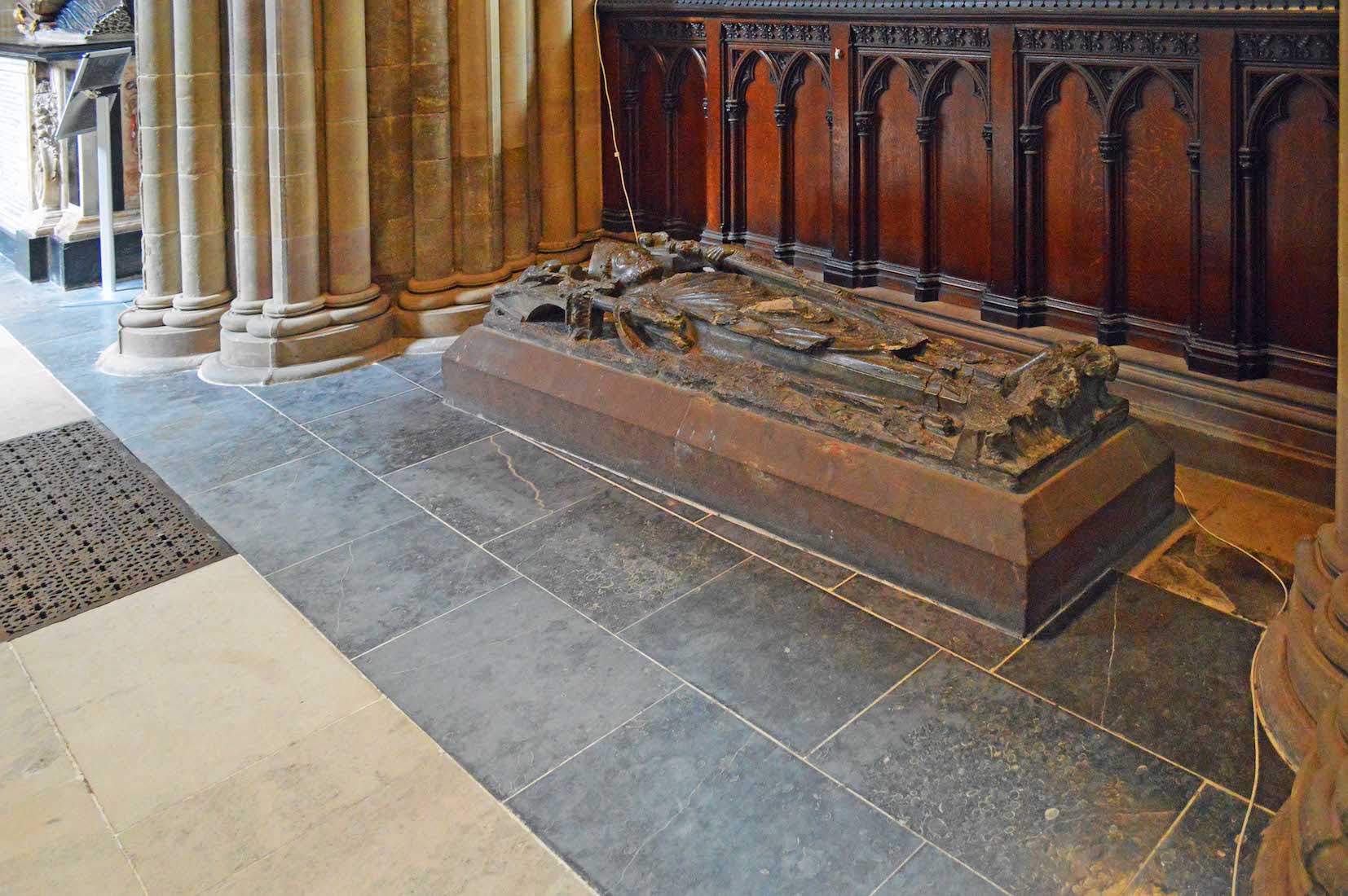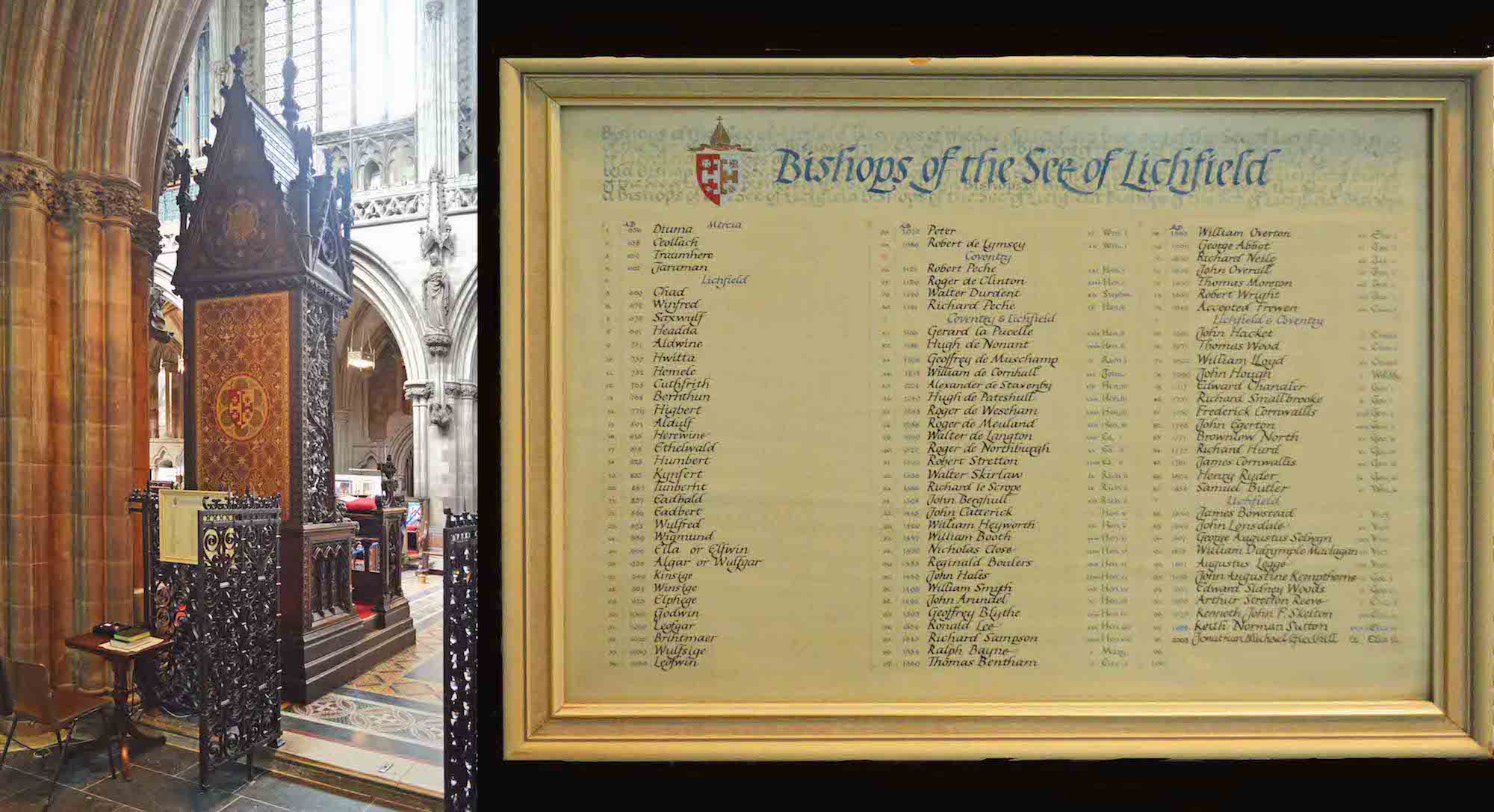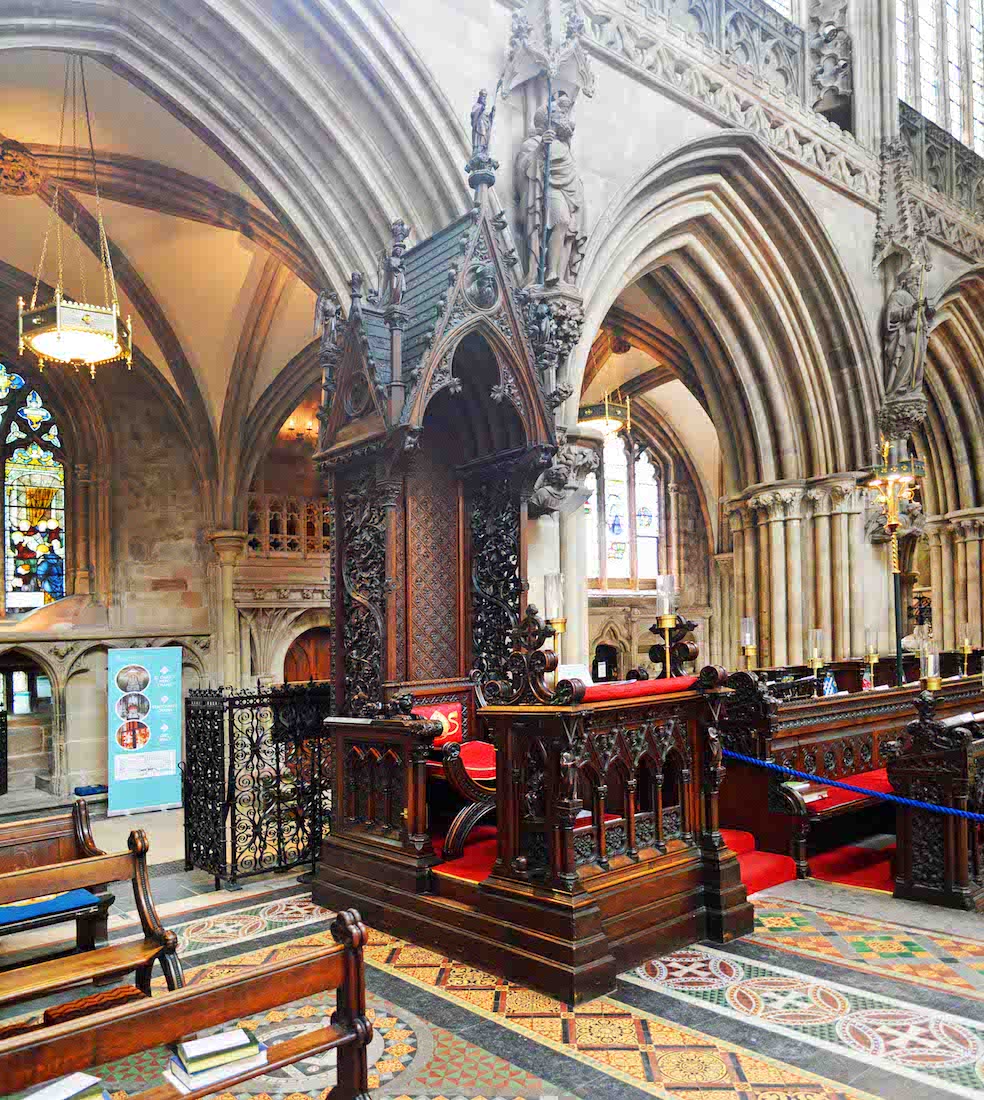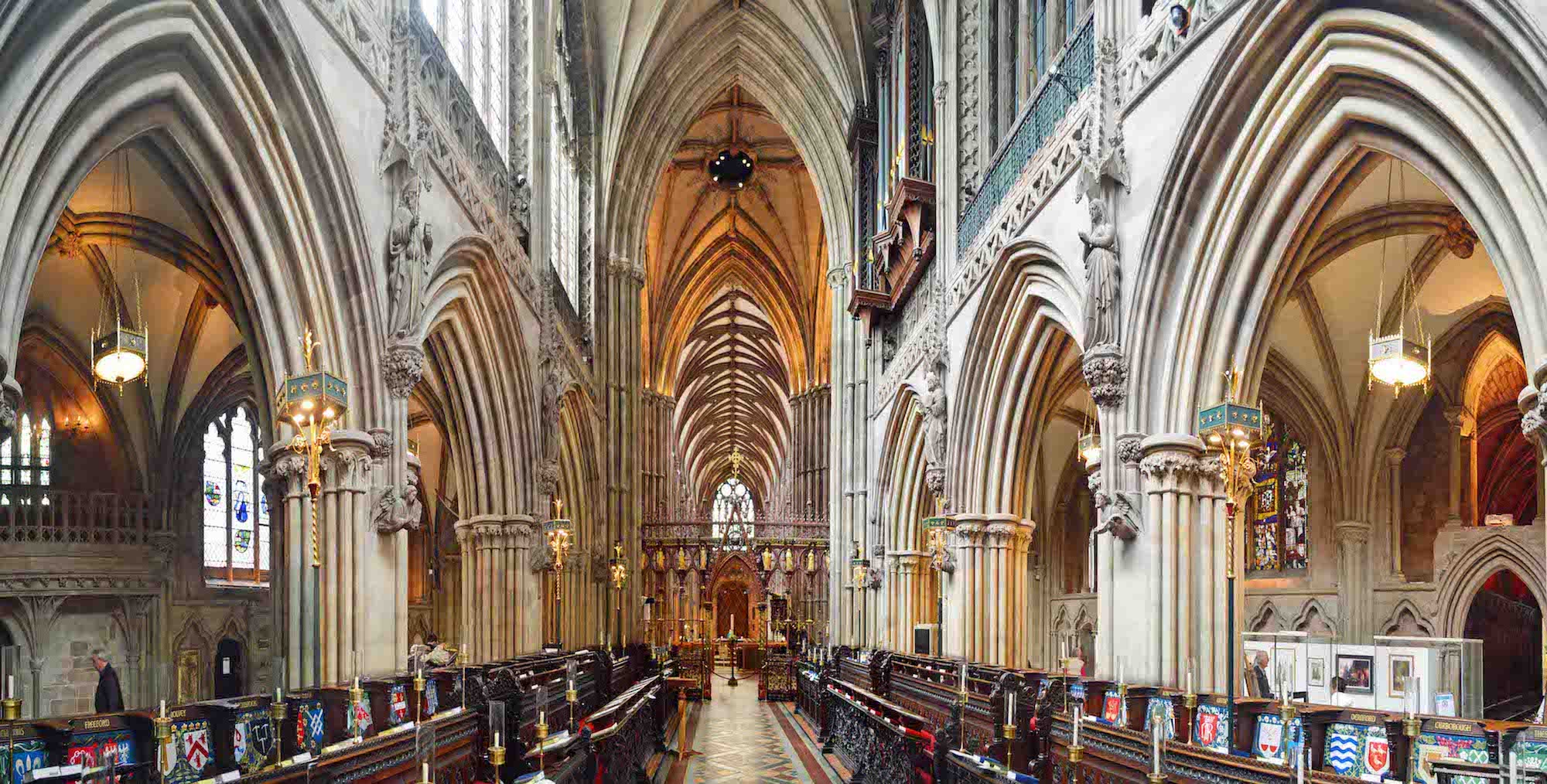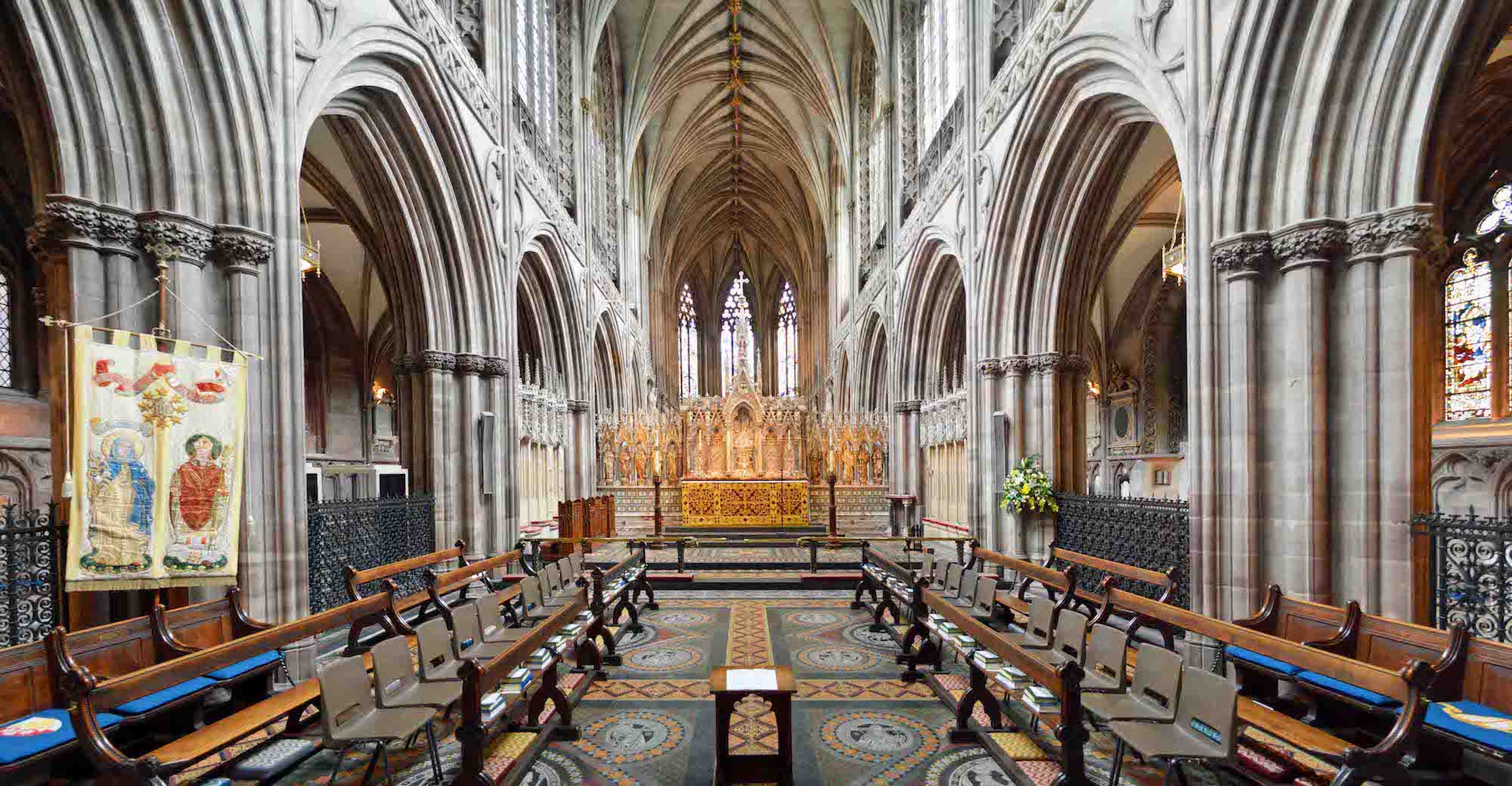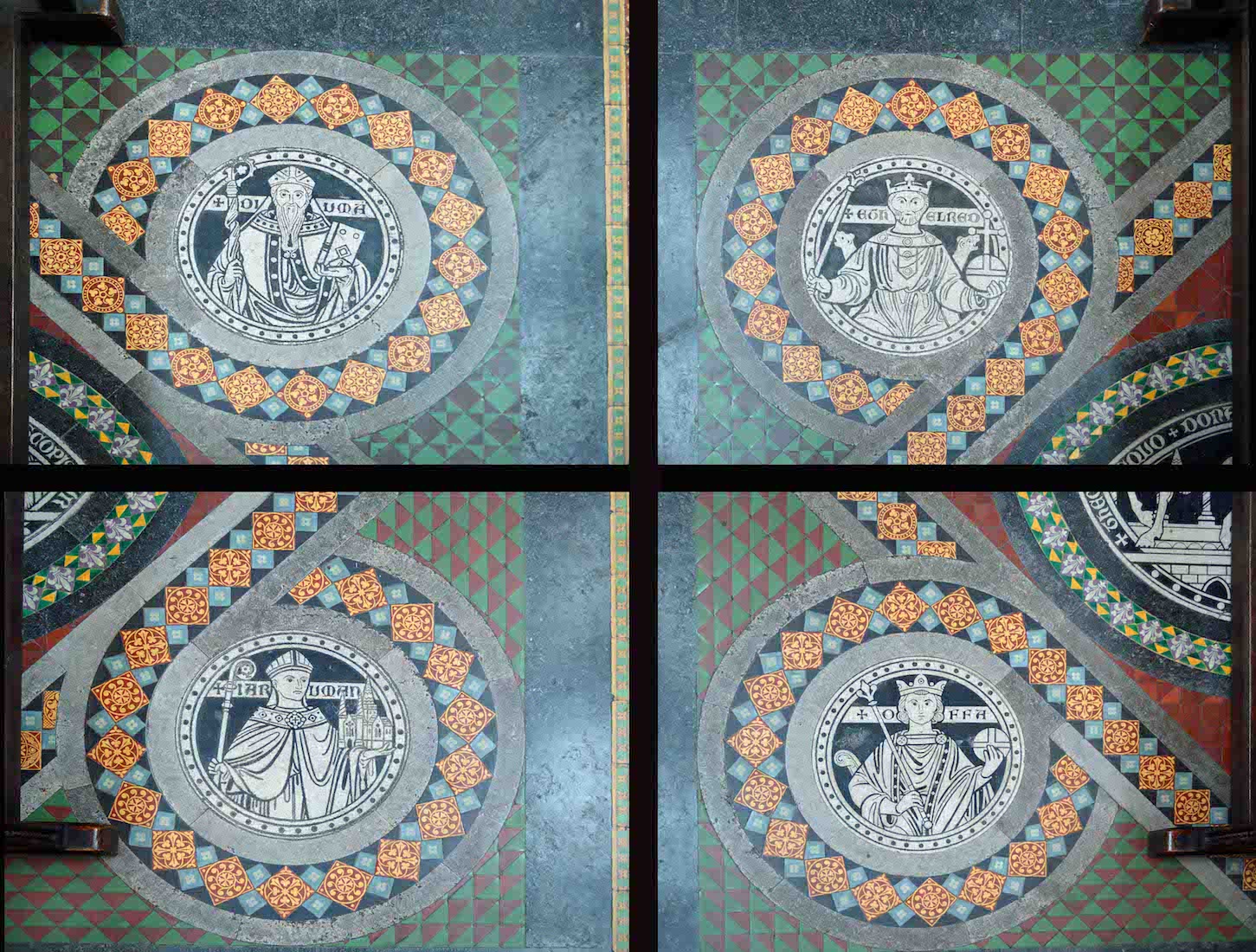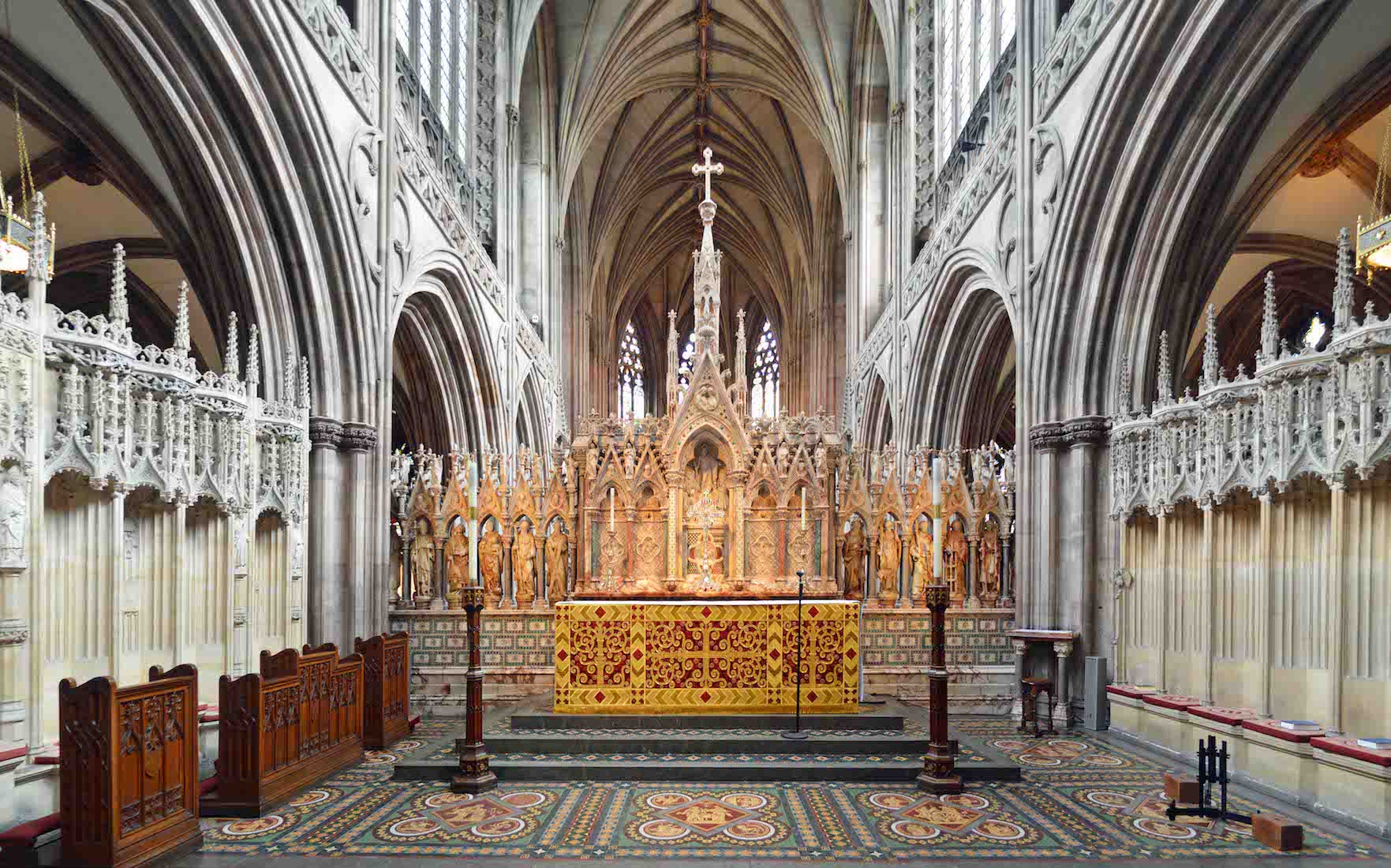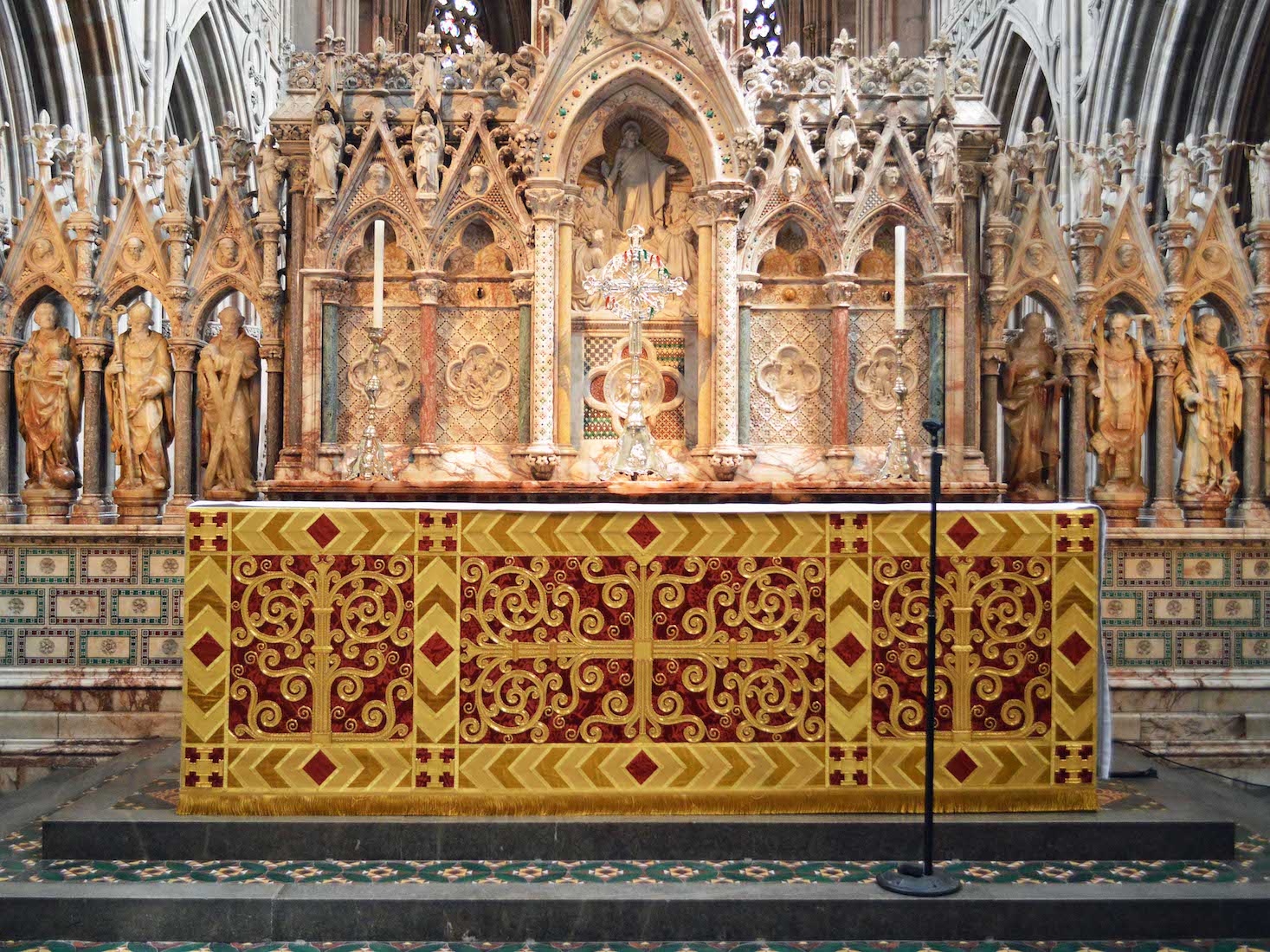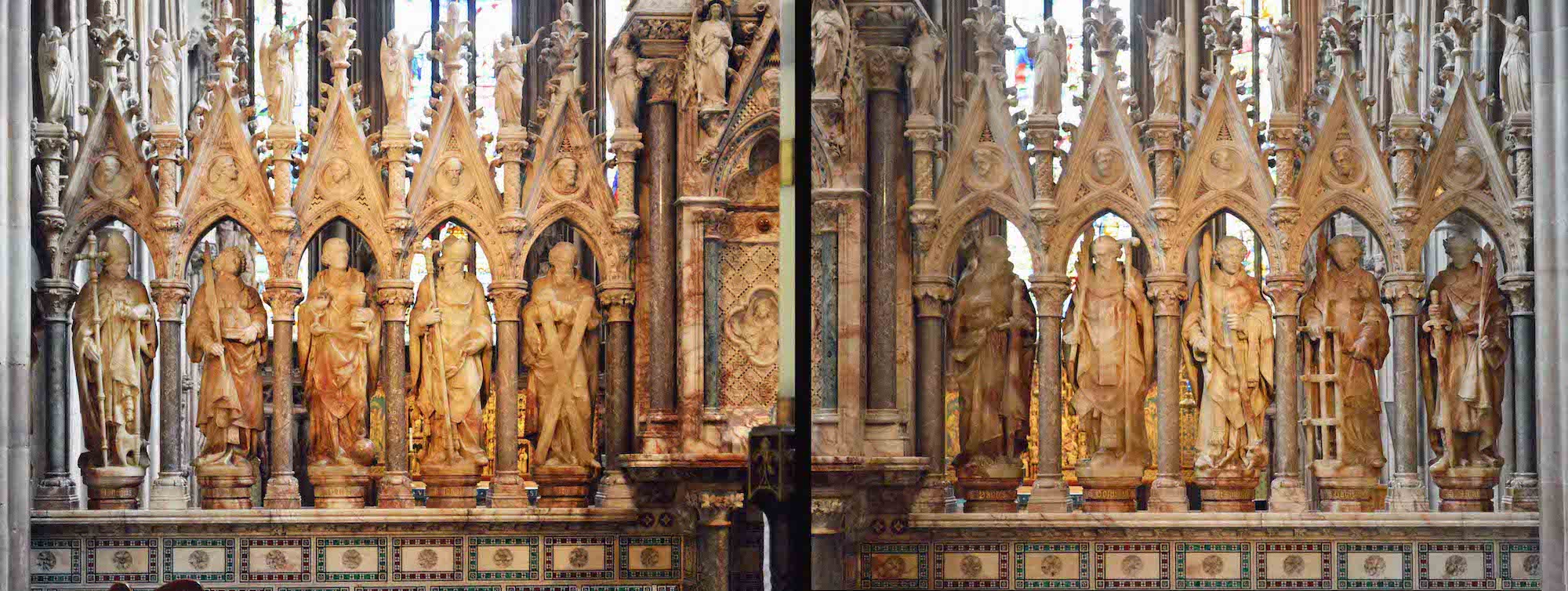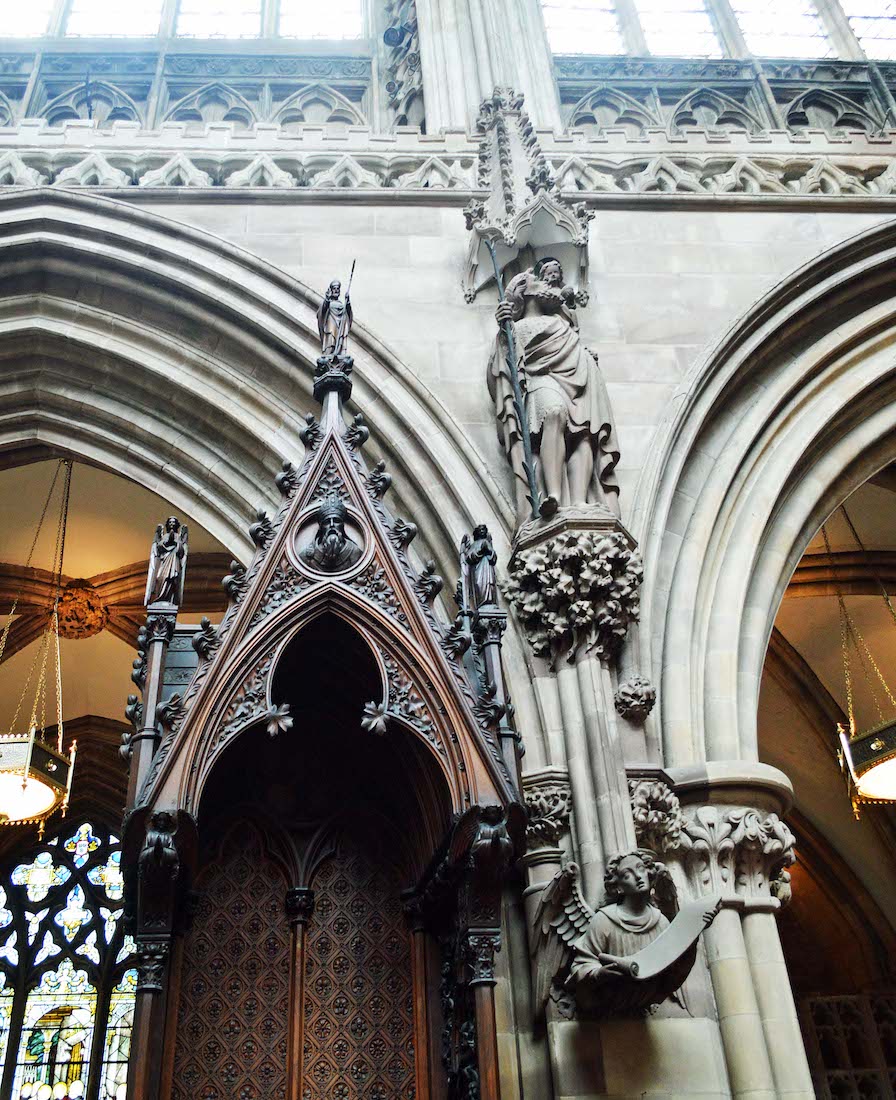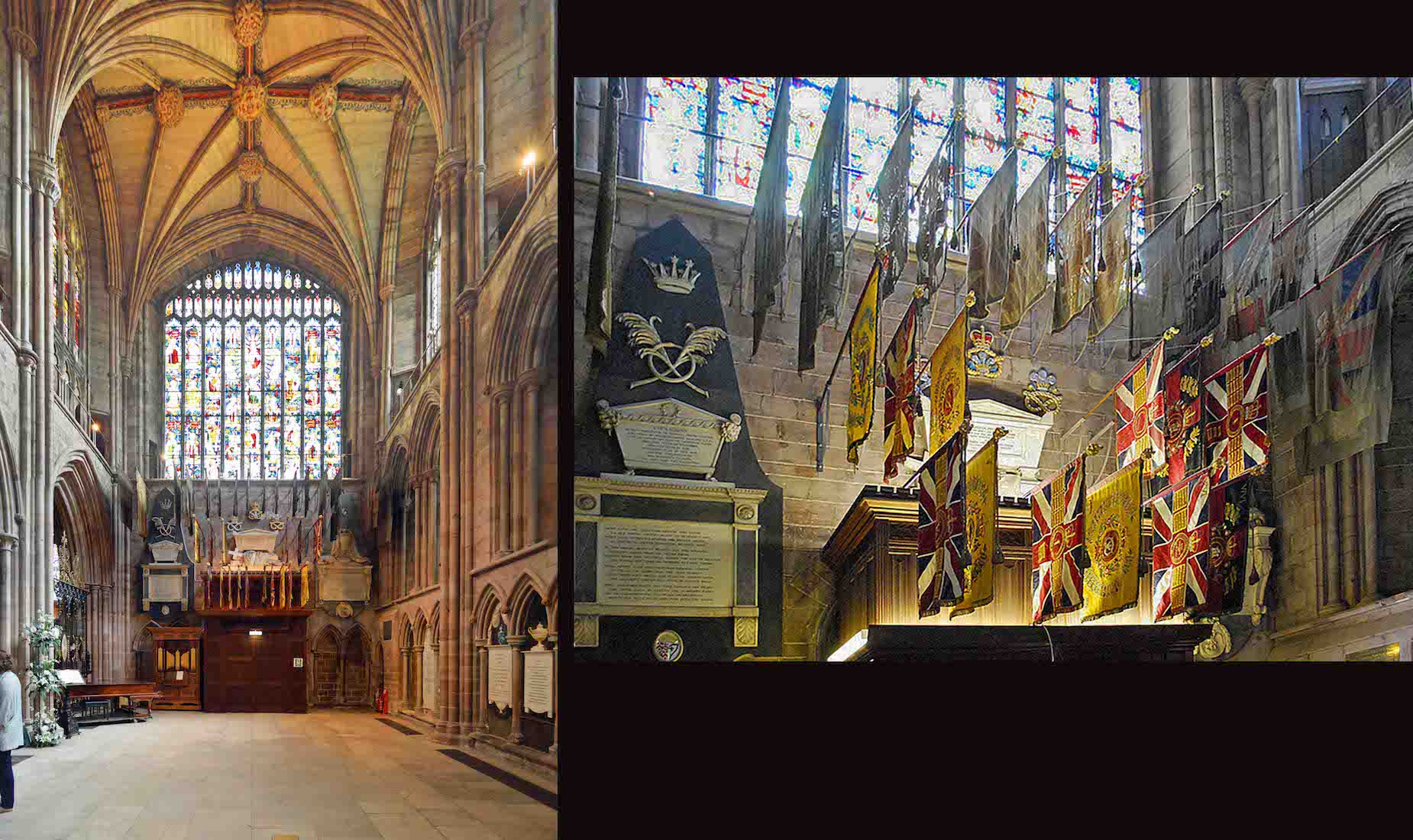
The far wall of the South transept makes a brilliant display with its large colourful window and masses of hanging regimental colours. PLAN
62. SOUTH TRANSEPT WINDOW
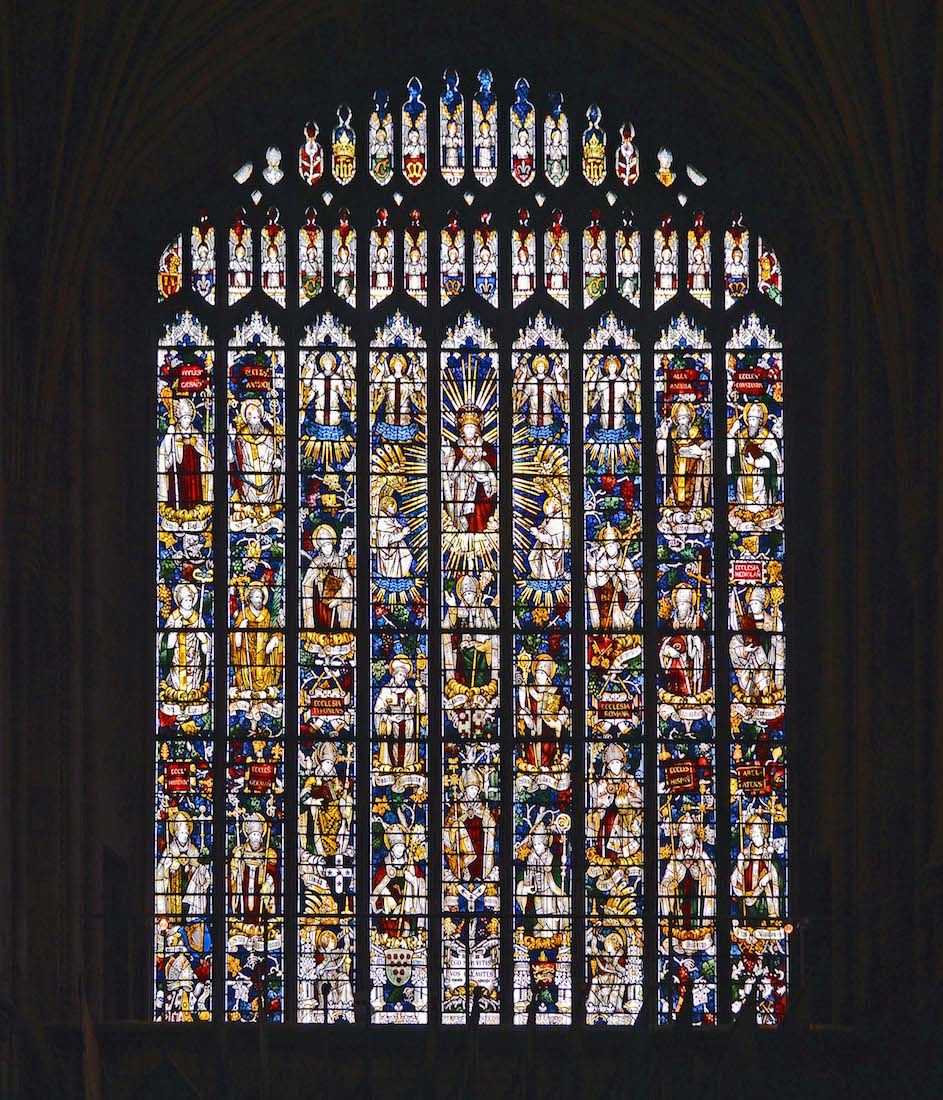
This impressive window was produced in 1895 by the Kempe studio. The window shows Christ in Glory and the spread of the Church.
63. WEST WALL ARCHES
The West wall of the South transept has four lancet windows with a row of arches below. Each of the blind arches contains a memorial tablet.
64. WEST WINDOWS
These windows are in memory of those who gave their lives in the South African War. The four windows show the Four Evangelists, Matthew, Mark, Luke and John. Below the main figures are shown gospel scenes with text.
65. SOUTH QUIRE AISLE
We now leave the South transept and move to the South quire aisle. The entrance is through another of the cathedral’s delightful wrought iron gates. To the left of the entry is the Rummer Goblet – an early eighteenth century glass goblet, originally used to measure a daily allowance of beer (part of the Commons) for each Choral Vicar. Looking back from inside the gates we see this South wall effigy and open arches to St Michael’s Chapel.
66. SOUTH QUIRE MEMORIALS
The brass plaque tells us that the effigy at right is of John Stanley. The monument at left, with its crucifixion panel is rather more impressive, but unnamed.
67. SOUTH QUIRE WINDOWS
The smaller memorial window at left is above the stairs leading up to the St Chad’s Head Chapel. It shows a scene from the life of Barnabas. The plain lattice window to the right has inserts of old glass – the remnants of previously destroyed windows.
68. NORTH SIDE OF AISLE
We now retrace our steps to the entry gate, and turn our attention to the North side of this quire aisle. Before us are two tomb memorials, and beyond, a view to the quire area.
69. TOMB MEMORIALS
The beautifully carved memorial at left is for William Hodson who was killed in action in Lucknow. Major William Stephen Raikes Hodson (1821 – 1858) was a British leader of irregular light cavalry during the Indian Rebellion of 1857, commonly referred to as the Indian Mutiny or the Sepoy Mutiny. He was known as ‘Hodson of Hodson's Horse’. The memorial at right is for Bishop Andreas Hacket. His motto was ‘I have served the Lord and rejoiced’.
70. ANOTHER EFFIGY
Next along the North side of the aisle is this very old effigy – also unnamed. I wonder if the current practice of attaching a name tag to the big toe was instigated by frustrated historians?
71. CATHEDRA AND LIST
An opening on the North side of the aisle now leads us through to the quire and sanctuary. Immediately in front of us is the back of the bishop’s chair, and attached to this is a framed list. This is one of those amazing historical documents listing the names of bishops dating back to 650 AD. Also of interest is the changing nature of the diocese: 650 Mercia; 669 Lichfield; 1121 Coventry; 1183 Coventry & Lichfield; 1661 Lichfield & Coventry; 1840 Lichfield.
72. CATHEDRA
This elaborately carved chair is the bishop’s throne or cathedra. It’s presence indicates that the bishop of the diocese is centred here, and it is from the word ‘cathedra’ (Latin for chair or throne) that this Church gains the name ‘Cathedral’. Notice the stairs up to the St Chad’s Head Chapel at left. The carved cathedra and quire stalls were designed by Gilbert Scott..
73. VIEW WEST ACROSS THE QUIRE
We are now standing just across from the Cathedra and looking towards the Great West Window. So many things to observe here! At upper right the pipes of the organ, the carved statues standing between the arches and the musical angels below, the ornate quire lights in front of each column as well as the quire candles, the carved quire stalls, and the ornate tiling of the aisle. The statues were carved by the London firm of Farmer & Brindley.
74. QUIRE STALLS
Each back quire stall carries the name of a parish in the Lichfield area (examples Wolvey, Dernford), and the corresponding coat of arms. The back of each front stall has a central circular carved floral motif – all appearing to differ. A joy of visiting cathedrals is the opportunity to sit with the choir for weeknight choral evensongs.
76. SANCTUARY TILING
The very striking pavement of Minton tiles here was designed by the versatile Gilbert Scott himself. Pevsner describes it as: ‘Stone, inlaid, medallions with scenes from the history of the diocese, also kings and bishops’.
77. CLOSER TO THE HIGH ALTAR
There is an overload of the senses here! The beautiful canopied white sedilia on either side, the different colourful tiling close to the altar, the stained and coloured forward candlesticks, the silver candlesticks and cross on the altar, the splendid altar frontal, and then the reredos behind. A theological question: does true worship best take place in a simple interaction between the worshipper and the Lord, or in a recreation of the great glory of God? Or perhaps both?
78. HIGH ALTAR AND REREDOS
The high altar gold and scarlet frontal has three main panels: the two outer identical panels show a flourishing tree, the larger central panel has a similar design but based on a central cross. I thought of the traditional ‘budded cross’ but there is not much resemblance! Behind the high altar is a beautiful marble reredos with different coloured marble pillars having pointed arches covered with crocketed pinnacles. This was made from the medieval screen which once stood at the entrance to the Lady Chapel.
79. REREDOS
In the centre of the reredos is Christ in Majesty set in an arch of semi-precious stones, with statues on either side and winged angels below. From left the saints are: St. Perpetua, St. Alphege, St. Stephen, St. Nicomede, St. Ignatius, and St. Andrew; St. Paul, St. Polycarp, St. Lucian, St. Lawrence, St. Alban, and St. Blandinia. The reredos was designed by Mr. C. E. Kempe and executed by Farmer and Brindley. The cost was £600.
80. CATHEDRA AND CARVED FIGURE
We leave the sanctuary and return to the South quire aisle by the way we came in. We notice the fine carved canopy of the cathedra with its angelic figures. Above is one of the larger sculpted quire figures we have noticed before: this one is St Christopher carrying the Christ child.


